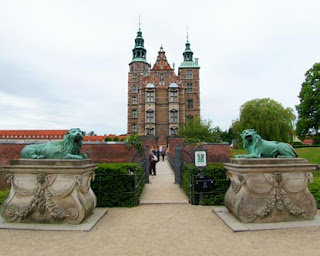
INDIAN MINIATURE ART PAINTING – Indian historical places painting Style
DESCRIPTION: This beautiful Indian Monument Painting "Taj Mahal of Agra" of Indian historical places painting style, depicts

In this Indian historical building painting On June 17, 1631 Mumtaz Mahal died, after delivering her fourteenth child "Gauharar". Shahjahan stood dazed, unable to comprehend the situation. She had died leaving all her children, mother, and relations to his care. But he had promised her never to remarry and to build the grandest mausoleum over her grave.

Her body received a temporary burial in the Zainabadi Garden in Burhanpur and in six months time removed to Agra. Shahjahan had already acquired from Raja Jai Singh a plot of land on the riverside. Here was to be built the Taj Mahal. Work on the tomb started in frenzy with thousands of artisans and laborers toiling ceaselessly.Shahjahan issued Farmans to Raja Jai Singh ordering immediate and constant supply of the Makrana marble for the tomb. The mausoleum rose higher with every sunset. In nearly six years time the main edifice of the tomb was complete.

In 1983, the Taj Mahal became a UNESCO World Heritage Site. While the white domed marble mausoleum is the most familiar component of the Taj Mahal, it is actually an integrated complex of structures. The construction began around 1632 and was completed around 1653, employing thousands of artisans and craftsmen.The construction of the Taj Mahal was entrusted to a board of architects under imperial supervision, including Abd ul-Karim Ma'mur Khan, Makramat Khan, and Ustad Ahmad Lahauri.Lahauri is generally considered to be the principal designer.

In 1631, Shah Jahan, emperor during the Mughal empire's period of greatest prosperity, was grief-stricken when his third wife, Mumtaz Mahal, died during the birth of their 14th child, Gauhara Begum. Construction of the Taj Mahal began in 1632. The court chronicles of Shah Jahan's grief illustrate the love story traditionally held as an inspiration for Taj Mahal. The principal mausoleum was completed in 1648 and the surrounding buildings and garden were finished five years later. Emperor Shah Jahan himself described the Taj in these words.
Should guilty seek asylum here,
Like one pardoned, he becomes free from sin.
Should a sinner make his way to this mansion,
All his past sins are to be washed away.
The sight of this mansion creates sorrowing sighs;
And the sun and the moon shed tears from their eyes.
In this world this edifice has been made;
To display thereby the creator's glory.

The Taj Mahal incorporates and expands on design traditions of Persian architecture and earlier Mughal architecture. Specific inspiration came from successful Timurid and Mughal buildings including; the Gur-e Amir (the tomb of Timur, progenitor of the Mughal dynasty, in Samarkand), Humayun's Tomb, Itmad-Ud-Daulah's Tomb (sometimes called the Baby Taj), and Shah Jahan's own Jama Masjid in Delhi. While earlier Mughal buildings were primarily constructed of red sandstone, Shah Jahan promoted the use of white marble inlaid with semi-precious stones, and buildings under his patronage reached new levels of refinement.

Soon after the Taj Mahal's completion, Shah Jahan was deposed by his son Aurangzeb and put under house arrest at nearby Agra Fort. Upon Shah Jahan's death, Aurangzeb buried him in the mausoleum next to his wife.
By the late 19th century, parts of the buildings had fallen badly into disrepair. During the time of the Indian rebellion of 1857, the Taj Mahal was defaced by British soldiers and government officials, who chiselled out precious stones and lapis lazuli from its walls. At the end of the 19th century, British viceroy Lord Curzon ordered a sweeping restoration project, which was completed in 1908. He also commissioned the large lamp in the interior chamber, modelled after one in a Cairo mosque. During this time the garden was remodelled with British-style lawns that are still in place today












































